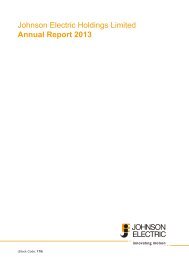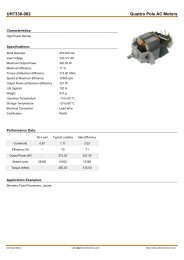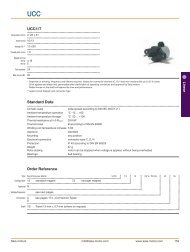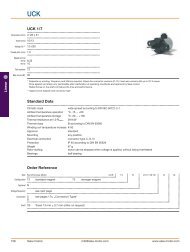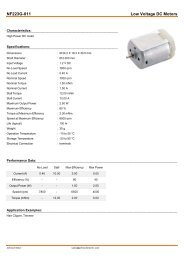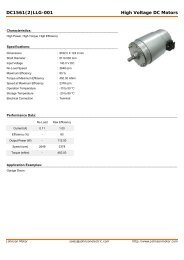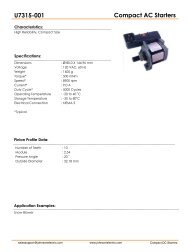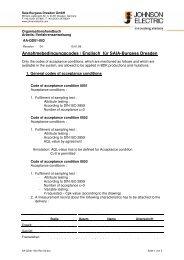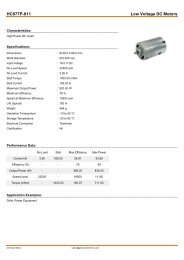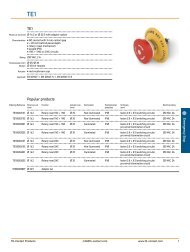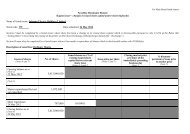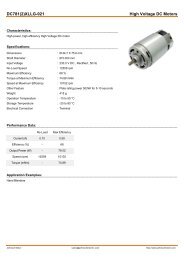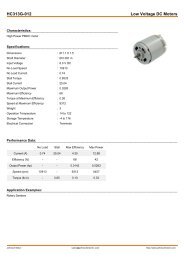You also want an ePaper? Increase the reach of your titles
YUMPU automatically turns print PDFs into web optimized ePapers that Google loves.
2. Principal accounting policies (Cont’d)<br />
NOTES TO THE ACCOUNTS<br />
2.11 INVESTMENTS (Cont’d)<br />
The Group assesses at each balance sheet date whether there is objective evidence that a financial asset or a<br />
group of financial assets is impaired. In the case of equity securities classified as available for sale, a significant<br />
or prolonged decline in the fair value of the security below its cost is considered in determining whether the<br />
securities are impaired. If any such evidence exists for available-for-sale financial assets, the cumulative loss<br />
– measured as the difference between the acquisition cost and the current fair value, less any impairment loss<br />
on that financial asset previously recognised in the profit and loss account – is removed from equity and<br />
recognised in the profit and loss account. Impairment losses recognised in the profit and loss account on<br />
equity instruments are not reversed through the profit and loss account.<br />
2.12 STOCKS AND WORK IN PROGRESS<br />
Stocks and work in progress are stated at the lower of cost and net realisable value. Cost, calculated on a<br />
weighted average basis, comprises materials, direct labour and an appropriate proportion of all production<br />
overhead expenditure. Net realisable value is determined on the basis of anticipated sales proceeds less the<br />
estimated costs of completion and the estimated selling expenses.<br />
2.13 TRADE AND OTHER RECEIVABLES<br />
Trade and other receivables are recognised initially at fair value and subsequently measured at amortised cost<br />
using the effective interest method, less provision for impairment. A provision for impairment of trade and<br />
other receivables is established when there is objective evidence that the Group will not be able to collect all<br />
amounts due according to the original terms of receivables. The amount of the provision is the difference<br />
between the asset’s carrying amount and the present value of estimated future cash flows, discounted at the<br />
effective interest rate. The amount of the provision is recognised in the profit and loss account.<br />
2.14 CASH AND CASH EQUIVALENTS<br />
Cash and cash equivalents comprise cash on hand, demand deposits with banks, bank overdrafts and highly<br />
liquid investments that are readily convertible into known amounts of cash and which are subject to an<br />
insignificant risk of change in value, and within three months of maturity at acquisition.<br />
2.15 SHARE CAPITAL<br />
Ordinary shares are classified as equity.<br />
Incremental costs directly attributable to the issue of new shares or options are shown in equity as a deduction,<br />
net of tax, from the proceeds.<br />
Where any Group company purchases the Company’s equity share capital (Treasury shares), the consideration<br />
paid, including any directly attributable incremental costs (net of income taxes,) is deducted from equity<br />
attributable to the Company’s equity holders until the shares are cancelled, reissued or disposed of. Where<br />
such shares are subsequently sold or reissued, any consideration received, net of any directly attributable<br />
incremental transaction costs and the related income tax effects, is included in equity attributable to the<br />
Company’s equity holders.<br />
<strong>Johnson</strong> <strong>Electric</strong> Holdings Limited 65



